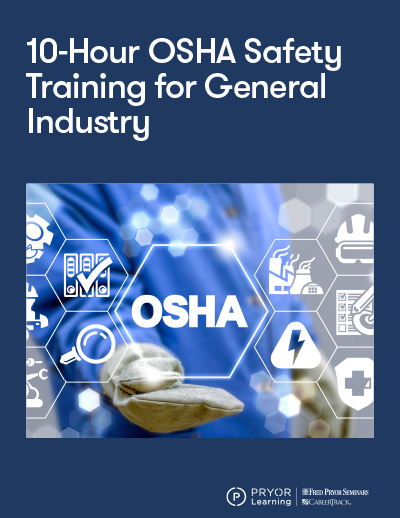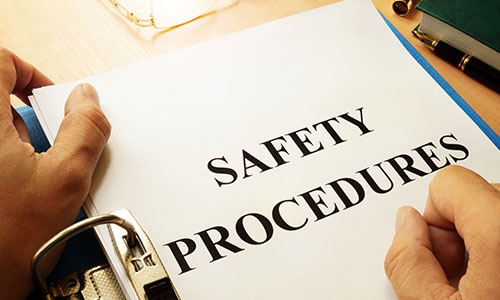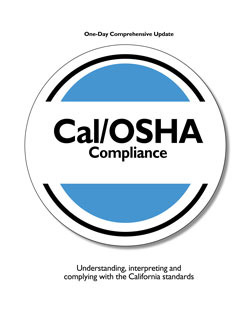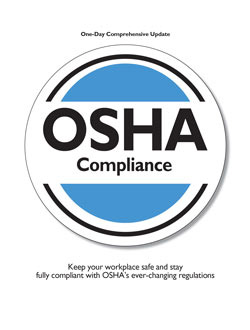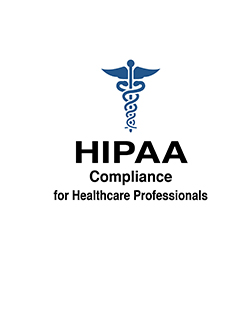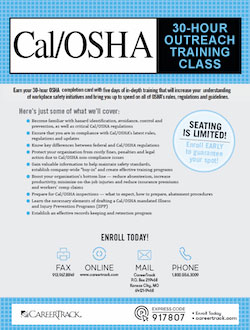Systematic Workplace Safety: Asking Who and When?
- Author: Sheryl McAtee
- Categories:
- Tags:
- Share on:
Preparedness takes different forms and needs different tools depending on who is impacted and when. Here are two scales to consider:
- WHO: Is the focus on the individual, or the larger office or organization?
- WHEN: Is the focus on an immediate emergency or event, or longer-term safety planning?
When combining these scales, there are four dimensions to consider, with tools that apply to each area:
Individual, Immediate Dimension: This dimension addresses an emergency situation facing an individual. The most important tool here is an Emergency Contact Form. Do you know who the person would want you to call in a medical or other personal emergency? Having a repository of emergency contact information, with appropriate controls and access is an easy step to take.
Office, Immediate Dimension: This dimension addresses an immediate situation facing an entire office, like a building emergency. Useful tools here are evacuation plans and practice sessions (e.g., fire drills), and call plans and contact lists to notify and account for everyone. Other tools include redundant communication tools, like text broadcast systems, computer alert systems and email broadcast services to get updates out quickly.
Individual, Long-Term Dimension: This dimension addresses the long-term safety of an individual employee. Tools here include workplace safety checklists and monitoring, ergonomic assessments, safety equipment, personal protective equipment and other regular reminders. The Occupational Safety and Health Administration (OSHA) offers many tools that fall into this dimension.
Office, Long-Term Dimension: This dimension addresses developing a long-term workplace safety culture across an office or organization. Useful tools here include regular training and discussions about workplace safety, signage, policies and procedures and resources that support the general physical and mental health of employees, such as Employee Assistance Programs and health insurance.
Some organizations may be focusing on the next emergency, but not addressing cultural factors that support safety. Some organizations may offer long-term training and infrastructure for safety management but be blind to possible local emergencies. This list provides a framework for considering your organization’s current safety capabilities, decision-trees and gaps.
Choose a Seminar and Save $10
OSHA Compliance for Healthcare Professionals
1 Day
- CEU: 0.6
Team Training - Virtual or In-person
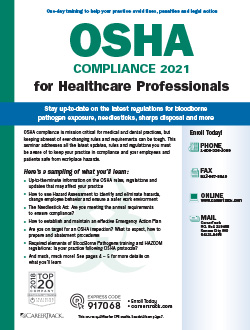
30-Hour OSHA Outreach Training Program (5-Day)
5 Day
- CEU: 3
- HRCI: 30
- PDC: 30
Virtual Seminars:
-
Apr 28-2
-
May 5-9
-
May 12-16
-
+ 4 more dates
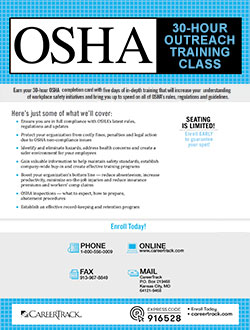
10-Hour OSHA Outreach for General Industry
2 Days
- CEU: 1.2
- HRCI: 10
- PDC: 10
Virtual Seminars:
-
May 8-9
-
May 13-14
-
May 28-29
-
+ 3 more dates
